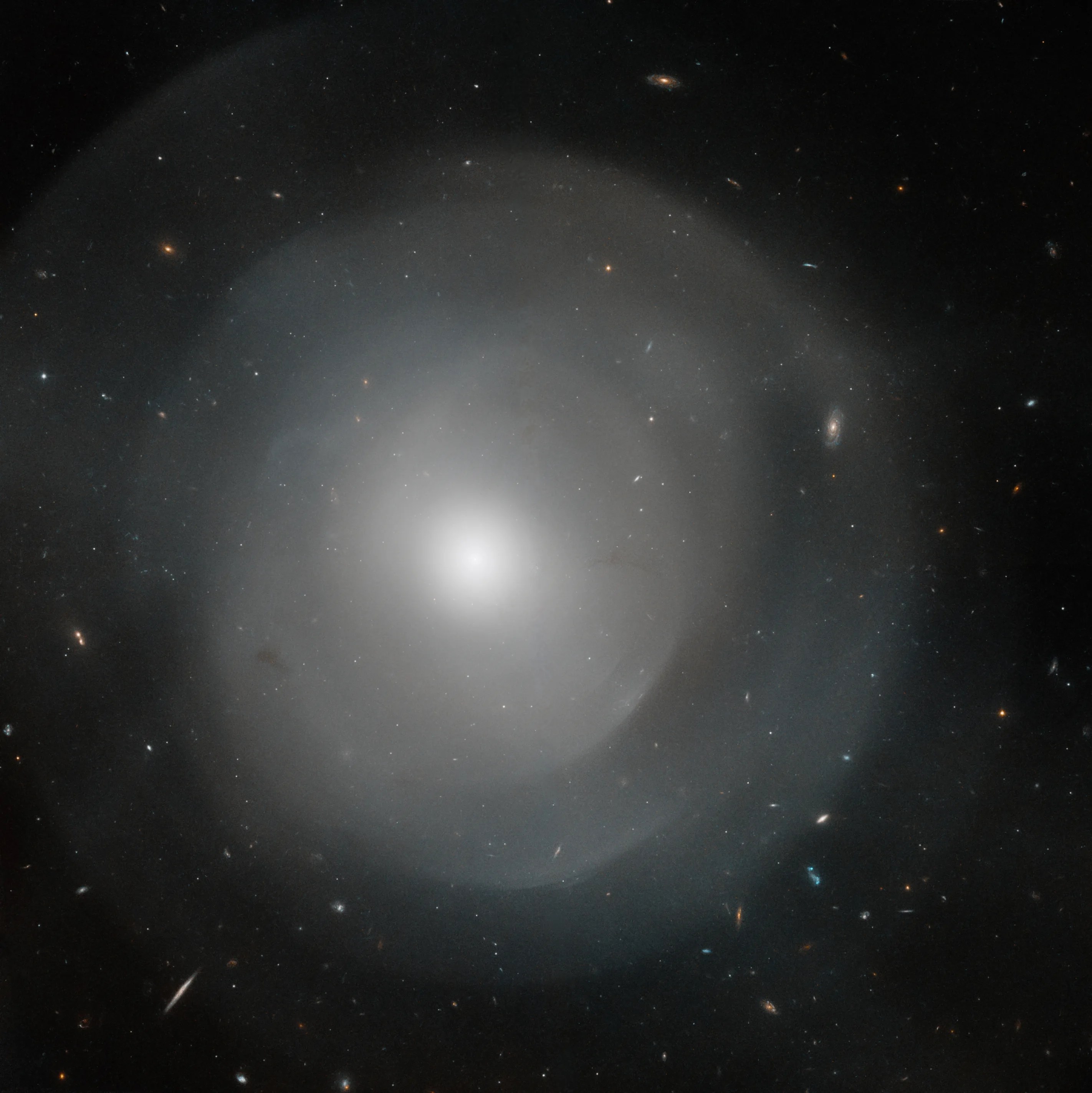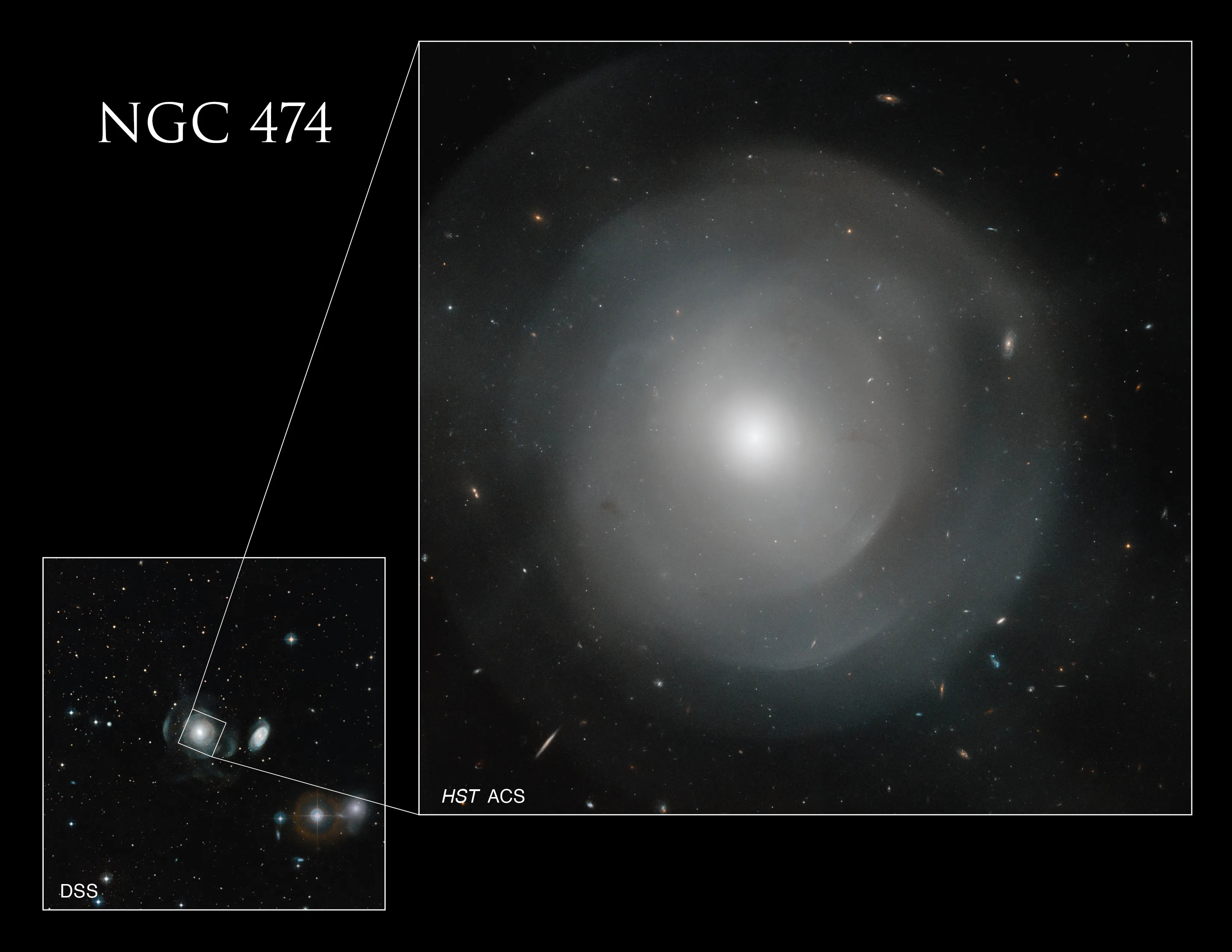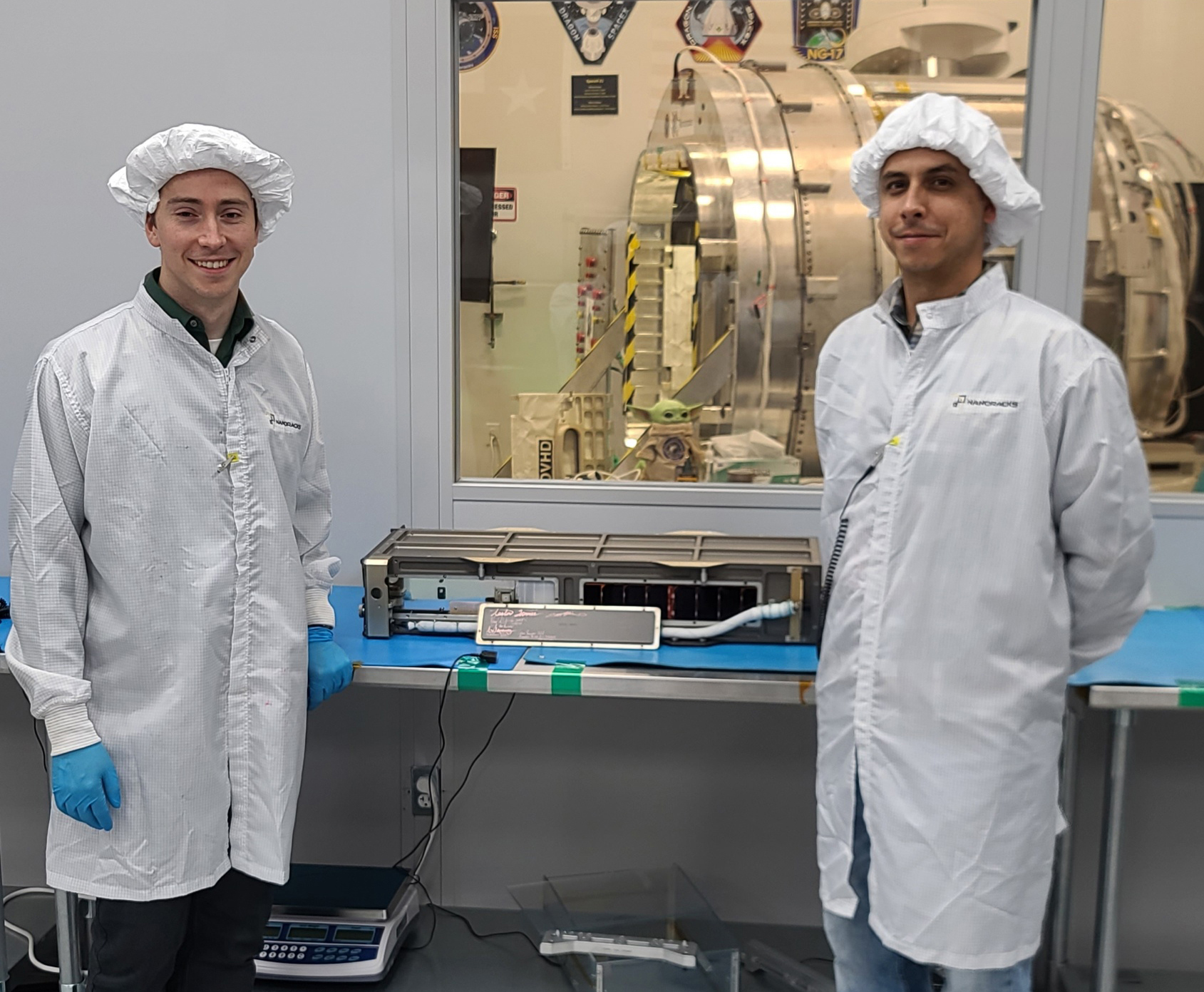1 min read

This new NASA Hubble Space Telescope image captures the central region of the gigantic elliptical galaxy NGC 474. Located some 100 million light-years from Earth, NGC 474 spans about 250,000 light-years across – that’s 2.5 times larger than our own Milky Way galaxy! Along with its enormous size, NGC 474 has a series of complex layered shells that surround its spherical-shaped core. The cause of these shells is unknown, but astronomers theorize that they may be the aftereffects of the giant galaxy absorbing one or more smaller galaxies. In the same way a pebble creates ripples on a pond when dropped into the water, the absorbed galaxy creates waves that form the shells.
About 10% of elliptical galaxies have shell structures, but unlike the majority of elliptical galaxies, which are associated with galaxy clusters, shelled ellipticals usually lie in relatively empty space. It may be that they’ve cannibalized their neighbors.
The image was created using data from Hubble’s Advanced Camera for Surveys. Additional gap-filling data was provided by Hubble’s Wide Field and Planetary Camera 2 and Wide Field Camera 3. The color blue represents visible blue light while the color orange represents near infrared light.

Media Contacts:
Claire Andreoli
NASA's Goddard Space Flight Center
301-286-1940







